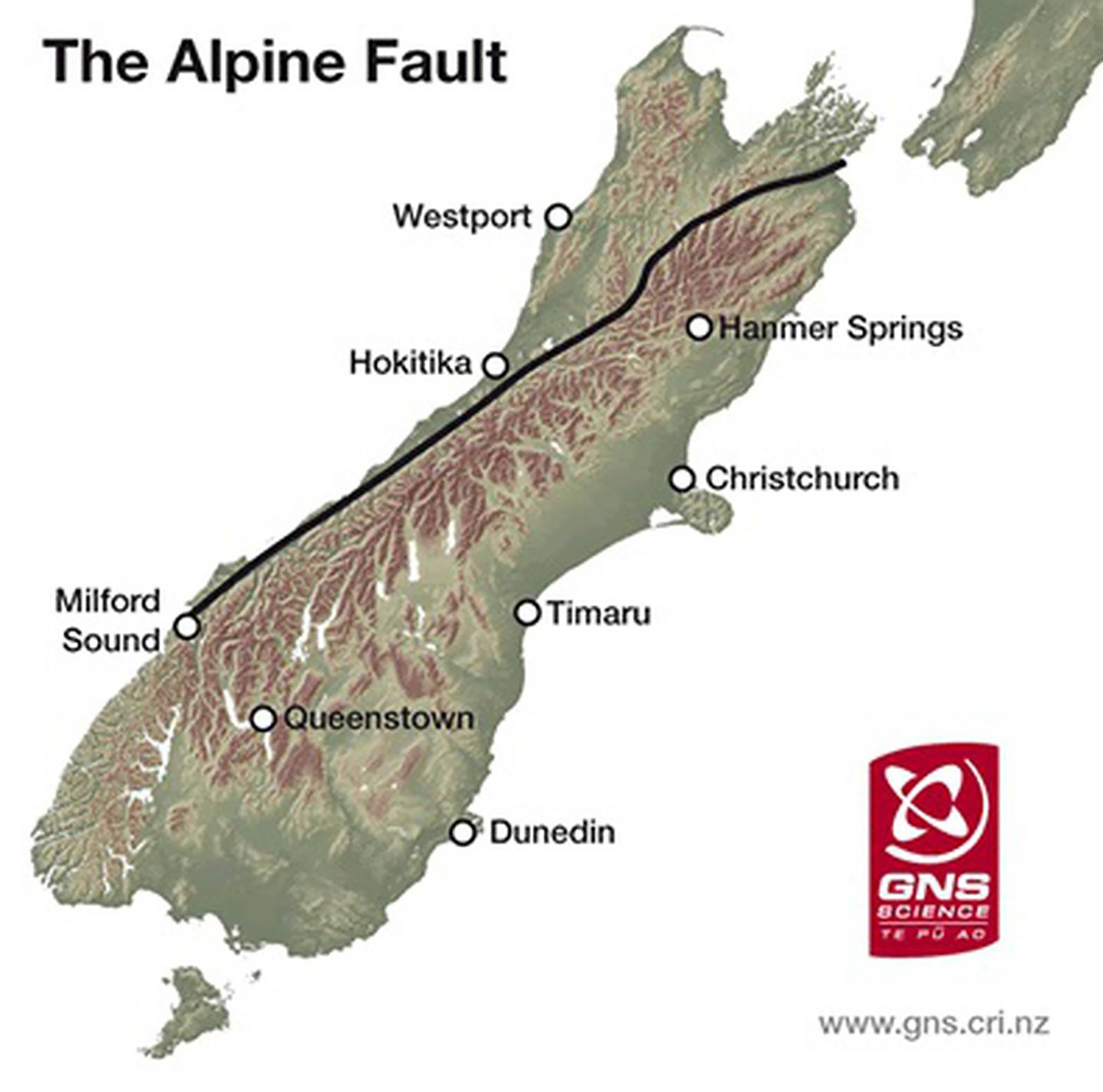
New research shows a 75 per cent probability of a rupture on the central section of the Alpine Fault over the next 50 years. There is an 82 per cent chance the earthquake will be magnitude 8 or higher.
The district council is confident its civil defence and community response systems are well placed to respond.

He said Arthur’s Pass, as well as Castle Hill and Lake Coleridge, would be the most susceptible parts of the district to damage from landslides, similar to what was seen in the Kaikoura/Hurunui earthquake.
“As part of our AF8 community programme we have prepared comprehensive community response plans with these communities, and have equipped them with resources such as radios, satellite phones, emergency water supplies and first aid kits. We also have trained Civil Defence volunteer teams in all these locations,” Lawn said.
Water, power and phones would likely be out of action for an extended period of time in some areas. In alpine communities, such as Arthur’s Pass and Castle Hill, rupture of pipelines was likely in a major event.
While emergency services are expecting damage on the plains, especially in communities closer to the Alpine Fault such as Darfield and Kirwee, Lawn said it was difficult to forecast impacts specific to any area because this would depend on factors such as the location, strength, length and direction of the earthquake.
“We’ve been working with other agencies over a number of years to plan and prepare for the eventuality of a major earthquake.
“We’re part of the AF8 programme which is helping communities to build resilience and preparedness, and we also work closely with emergency management groups to co-ordinate our response to any future Alpine Fault event.”
The council ran AF8 community education nights, providing information on the likely consequences of such an event , as well as other emergencies. Its planning included developing and resourcing community response teams throughout the district, made up of locals trained to respond.
The council provided information and alerted communities to immediate hazards through Selwyn Gets Ready. Lawn encouraged residents to join at selwyn.getsready.net
It would shortly be releasing a new booklet on preparing for emergencies. Are You Ready? would be distributed throughout the district.
The council would be holding further Get Ready presentations in coming months, covering how to be prepared. These will be at Darfield on May 19, Lincoln on August 18 and Rolleston on November 3.

Shaking in an Alpine Fault earthquake could last up to four minutes, result in casualties and set off other fault-lines on the plains.
In Arthur’s Pass, just 20km from the Alpine Fault, emergency planners are considering they may have to evacuate the village, particularly with the possibility of long-term magnitude 6 and 7 aftershocks.
Arthur’s Pass fire brigade chief Nic Menary said it was difficult to say whether or not there would be casualties. There could be rock falls and slips into the valley, and while emergency personnel planned for the worst, the local style of building with bach-style timber and corrugated iron materials could help protect people.
The permanent population is about 35 people, but there can be up to 300 visitors staying in busy periods at the village and local campgrounds. There are about 100 dwellings, most of which are baches.
Other structures include the Department of Conservation Field and Visitor Centre, train station, police station, fire station, two motels, two cafes, two backpacker hostels, a YMCA outdoor education centre and numerous alpine and tramping club huts.
Menary encouraged locals, bach owners and visitors to Arthur’s Pass to think about what they would do in the event of being trapped. He recommended storing enough food to last three weeks, and at least three days of water per person.
“The reality is that we may quite literally have to walk away from the village with only the shelter and food that we can carry. During a national disaster we can’t necessarily rely on anyone but ourselves, at least in the short term,” he said.
The village would likely lose mains power. Work was underway to set up generator connections to critical local buildings such as the police station, community centre and fire station.
Phone lines and internet could go down, leaving the FENZ satellite phone and DOC’s VHF radio network the only means of communication, although the latter could be affected by damage to remote repeaters on mountain tops.
Water could be contaminated by sedimentation from slips.

“In the event of a major Alpine Fault rupture, there would likely be several parts of the South Island highway network which would be inaccessible for workers because of the hazards associated with aftershocks, which could go on for many months,” Connors said.
“This means that rebuilding damaged parts of the highway network would also take many months.”
Canterbury University professor of disaster risk and resilience Tom Wilson said a lot of scientific inquiry was devoted to the area of the possibility of an Alpine Fault rupture triggering other fault-lines.
It is possible an Alpine Fault earthquake could trigger other seismic activity, in the same way aftershocks occurred after the Canterbury earthquakes of 2010 and 2011 and the Kaikōura earthquake of 2016.
“The best analogy I have heard is the way to think of New Zealand, especially the South Island, is it is kind of like a big shattered car window screen, and there’s all sorts of (hidden) faults all over the show,” Wilson said.
Shaking from an Alpine Fault magnitude 8 earthquake in Selwyn would most like be felt as a rolling motion lasting up to four minutes, he said. On the plains, the intensity would perhaps be only a little stronger than the shaking the district felt in the Kaikōura earthquake, and it could still be possible to stand.
Wilson said it was likely roads would continue to be usable on the plains, however, there could be settling of gravel around bridge approaches, closing them temporarily. Power would likely be lost for minutes to hours at the very least, as power companies checked their infrastructure.
In terms of damage to buildings, the district was well placed considering many earthquake prone structures had been demolished or upgraded in the past 10 years. Still people should not be complacent and needed to secure heavy furniture items, hot water cylinders and chimneys.
Darfield Volunteer Fire Brigade chief John Chambers said the brigade probably should be giving new focus to its readiness for a large earthquake in light of the new research.
He believed there was a possibility the quake could be felt stronger in the town than the Darfield 7.1 magnitude quake of 2010, considering the town’s proximity to the Southern Alps.
“None of us have lived through an earthquake of that size, there will be damage but what that is I can’t say,” Chambers said.
Keeping safe in an earthquake
- Drop, Cover and Hold – This stops you being knocked over, makes you a smaller target for falling and flying objects and protects your head, neck and vital organs. Practice the routine with your family.
- Prepare – Have a family or household chat to make an emergency plan to look after yourself and your loved ones for at least three days or more. Plan for when at home, at work, at school, wherever you might be if a disaster struck. Have essential supplies stored and ready, including at least three days’ supply of water for everyone in your household. Visit getready.govt.nz to make a plan and get simple tips on how to get ready for an emergency.
- Make your home safer – Make sure objects that could fall and hurt people are either placed somewhere else or fixed and fastened. Visit eqc.govt.nz/be-prepared for tips.











